Yesterday I wrote all about the start of our tour in Kenya up to crossing the border into Uganda. But I neglected to mention one big activity in Kenya which I saved for today’s post — my very first safari, at Lake Nakuru.
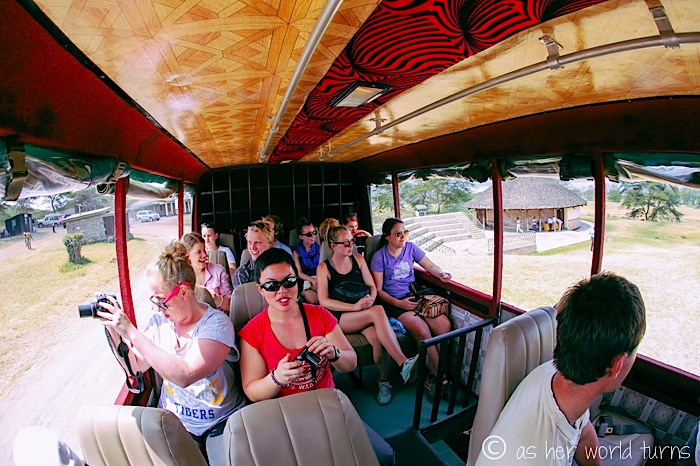
A safari refers to an expedition to observe or hunt animals in their natural habitat. It used to refer to longer journeys, but nowadays it’s used to describe a few hours’ game drive in a 4WD vehicle around any national park in Africa.
I can’t wait.
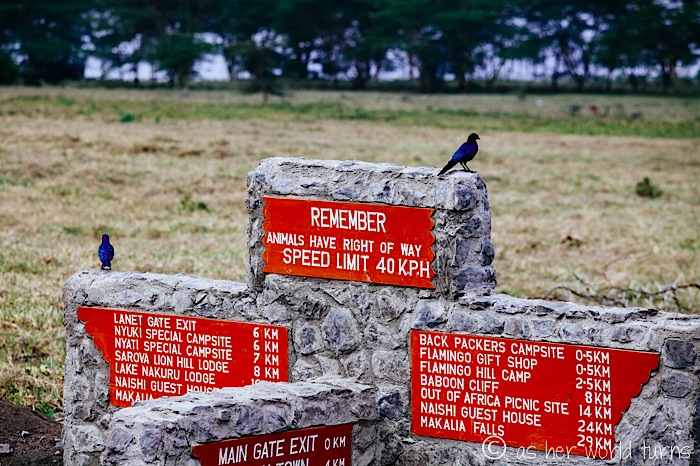
Lake Nakuru is among the oldest lakes in the world, as it lies on the Great Rift Valley — a geological trench that runs thousands of miles down the eastern part of Africa. It’s a soda lake, meaning its alkaline waters support highly specialized organisms. This lake is surrounded by protected land that is home to big game species like lions, rhinos, and buffalo, but the enormous flocks of pink flamingos steal the show and are most closely associated with the imagery of Lake Nakuru.
First we drive by the old entrance, which was built a few decades ago when the lake’s waters had dropped dramatically. The lake then rebounded and reclaimed this area as its own.
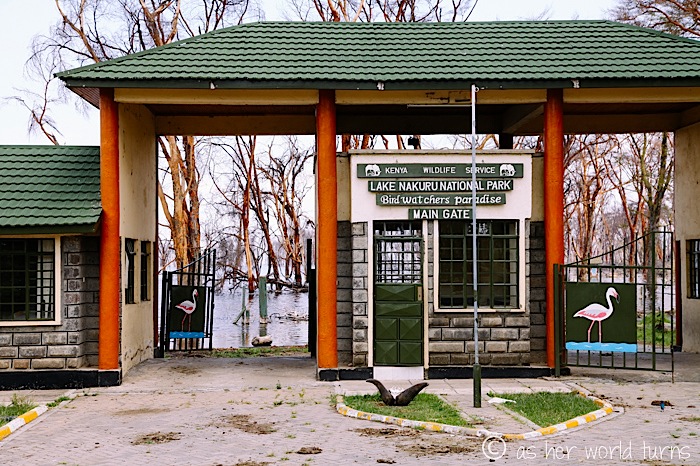
The old welcome / info center, now underwater:

Then we veer off into the woodsy area surrounding the lake in search of wildlife. We immediately find a bachelor herd of male impalas.

And then, not ten minutes into our three-hour game drive, we spot dueling rhinos locked in a stand-still battle.
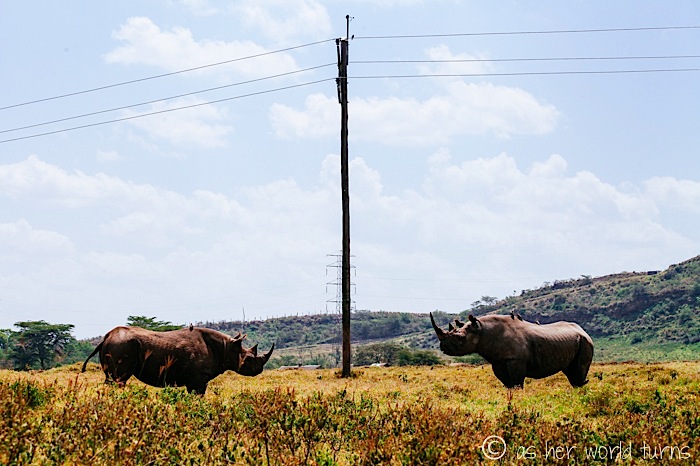
The birds on their backs act as cleaners, picking ticks and insects off the rhino’s armor plate of skin. You’ll notice there are swarms of flies around them, too.
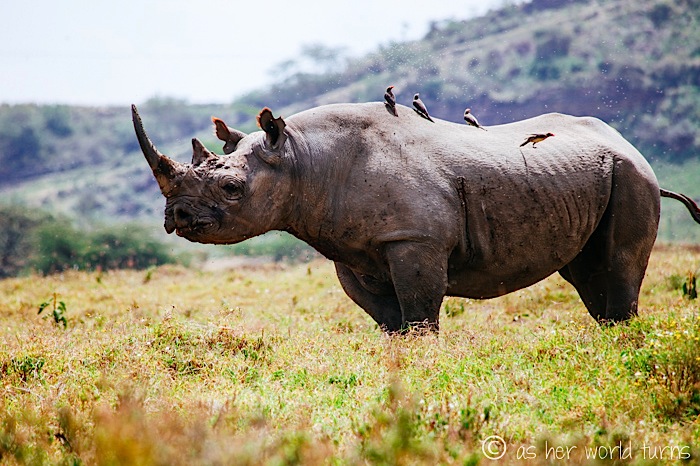
After a few minutes of watching the rhinos stand perfectly still, they suddenly charge.
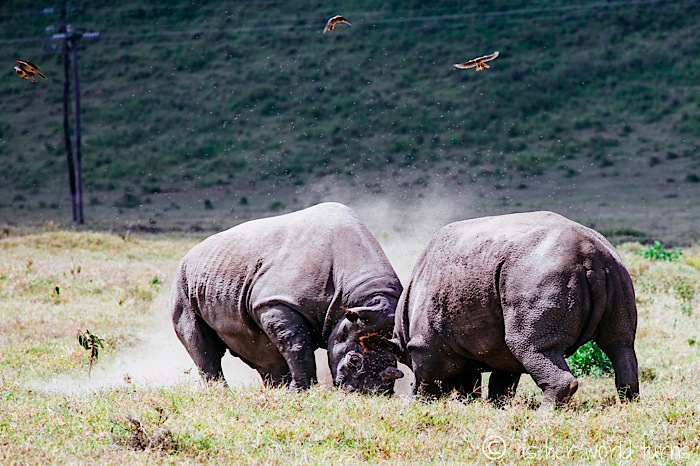
Whoa! They literally lock horns for a few seconds, then back up and prepare to charge again.
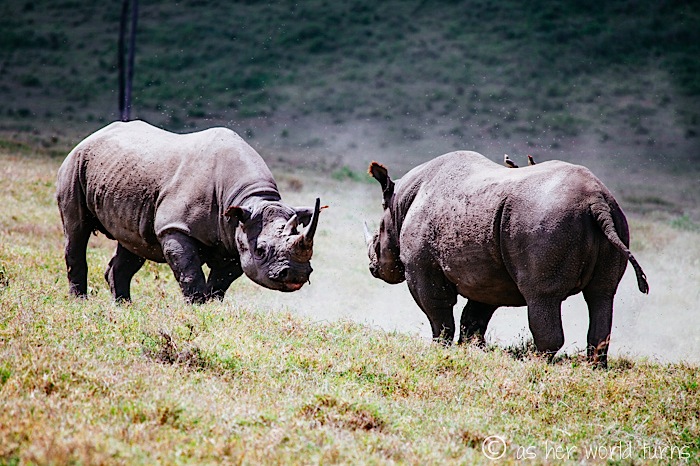
Ultimately they move farther apart until it becomes clear that the fight is over. I’m not sure who won?

They move off, with those birds in tow.
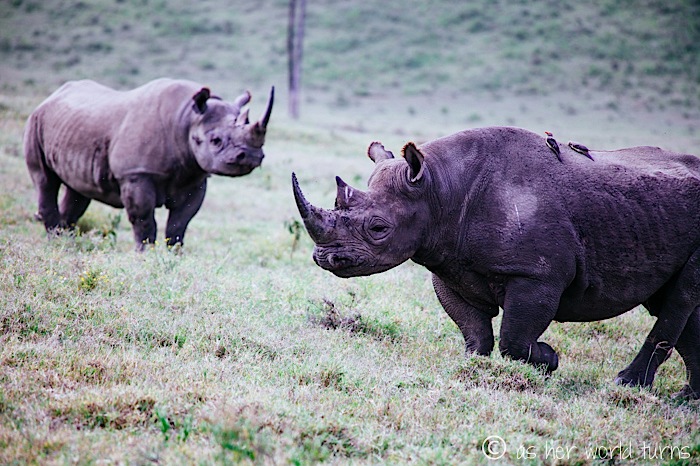
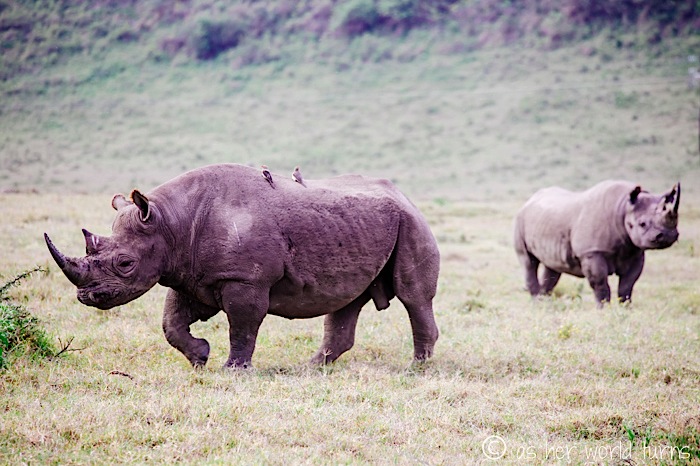
I don’t realize it yet, but not everyone sees dueling rhinos in the first ten minutes of their first safari. This is extremely lucky and the more parks I visit in Africa, the clearer it becomes that my expectations were set REALLY high by this first game drive through Lake Nakuru.
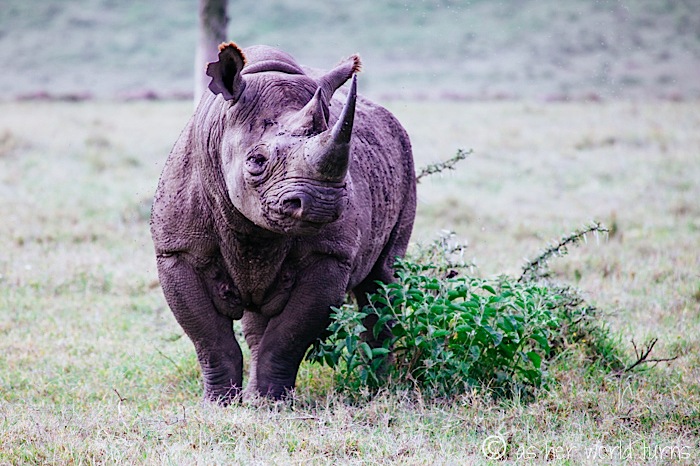
A few dozen yards from the rhinos we encounter this tortoise crossing the road. From the macro to the micro:

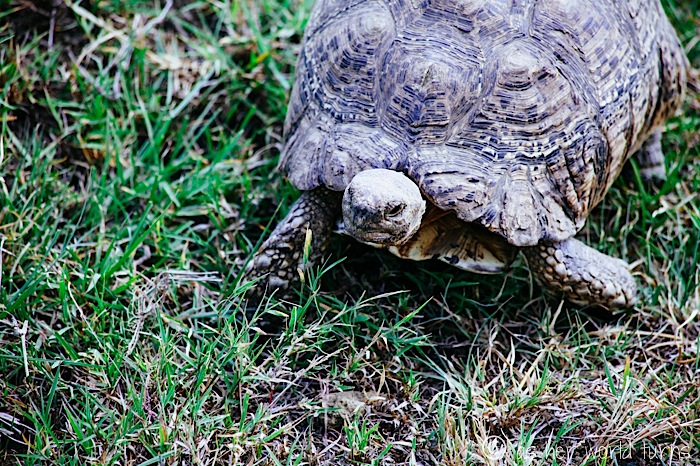
Next we spot zebra and female impalas frolicking among the greenery:
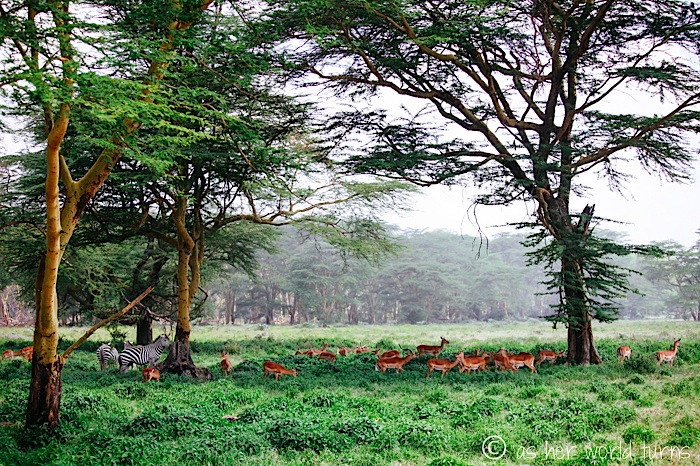
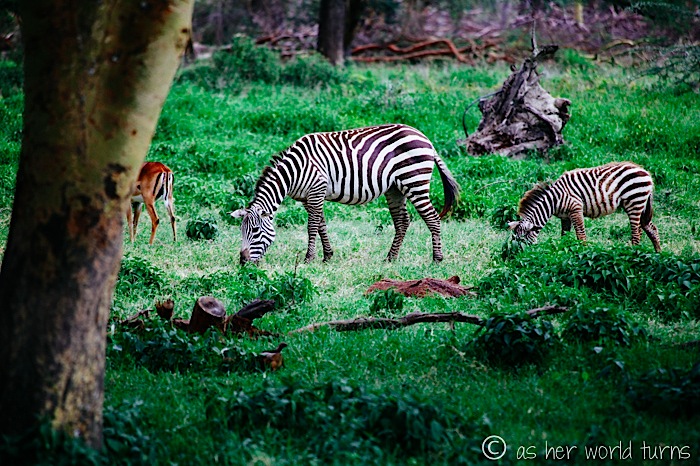
Shy female waterbucks peer out from behind their hiding (and lunching) spot.
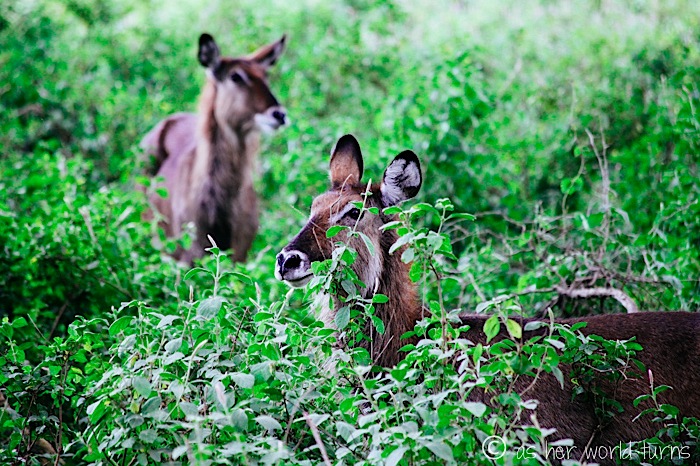

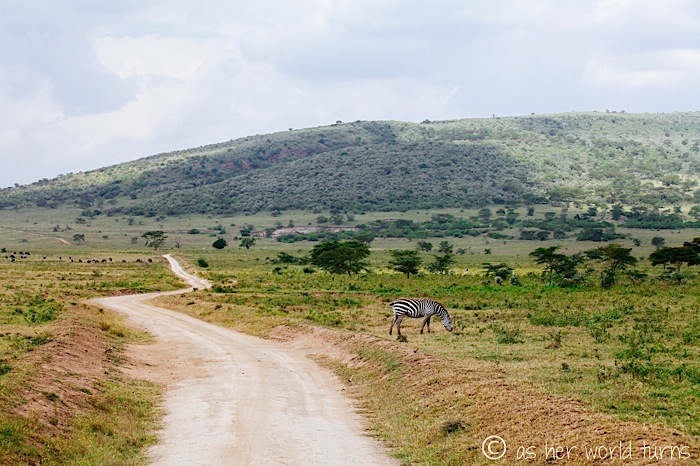
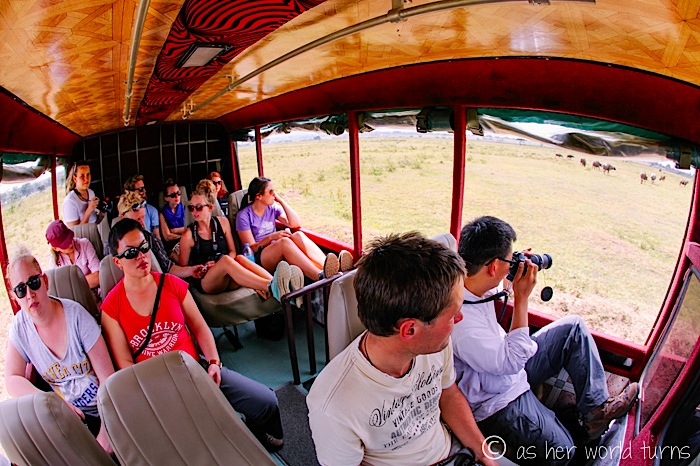
And here’s a herd of African buffalo, a large and dangerous creature. They are known to charge without warning and are one of the deadliest animals in Africa due to their unpredictable nature.

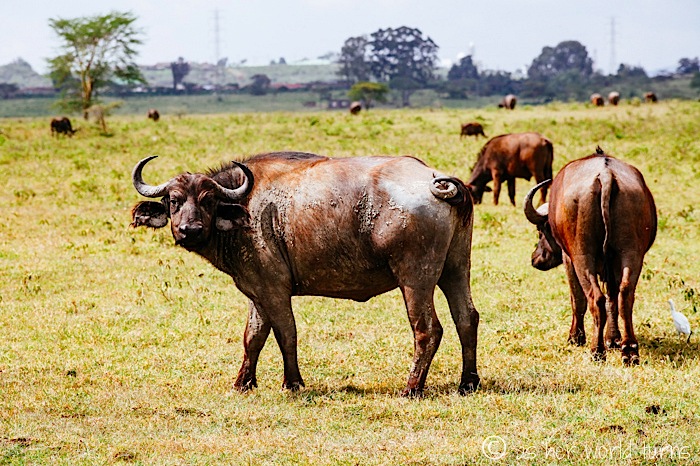
Check out these fierce needles on what I think is an acacia tree — they come in many varieties and I have trouble identifying them.
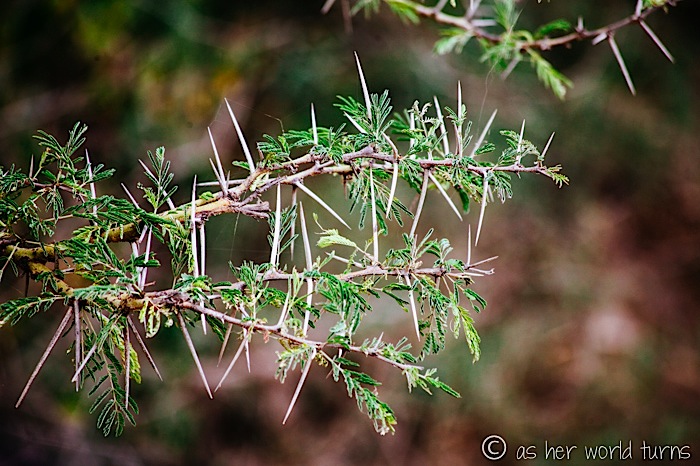
Of course, some of the wildlife here is no longer living — we spot evidence of the food chain.

Like this dead buffalo, who has been neatly disemboweled by its predators, leaving behind only the skin and head.
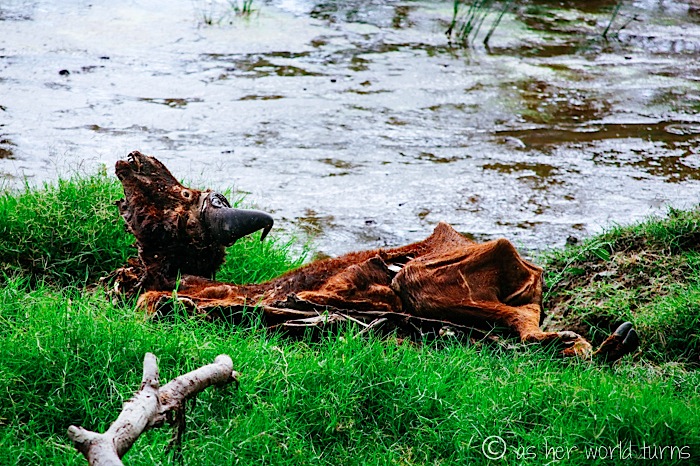
(For fun times check out this Louis CK riff about the food chain. Freaking hysterical.)
Our safari vehicle presses on. Way in the distance we spot the elongated neck of a giraffe:
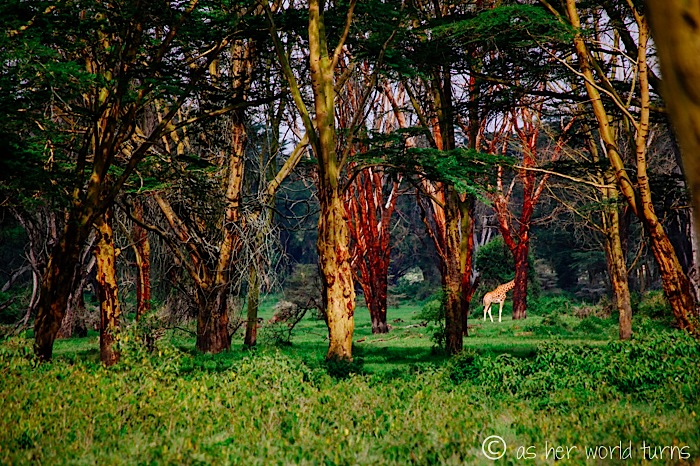
And then more rhinos cross right in front of us! Boy, I wish all game drives were this good. In retrospect, this was among the top three drives during my entire time in Africa.


Jackals in the distance:
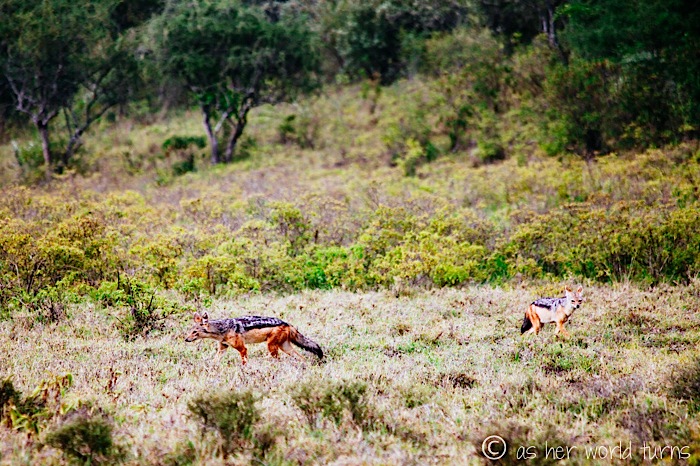

And then — as if this day couldn’t get any better — one of the German brothers on our tour yells out STOP!! He’s spotted a lion in a tree. A LION IN A TREE! It’s the only time I see this during my 4.5 months in Africa. Leopards in trees, yes — but not lions. This is special.
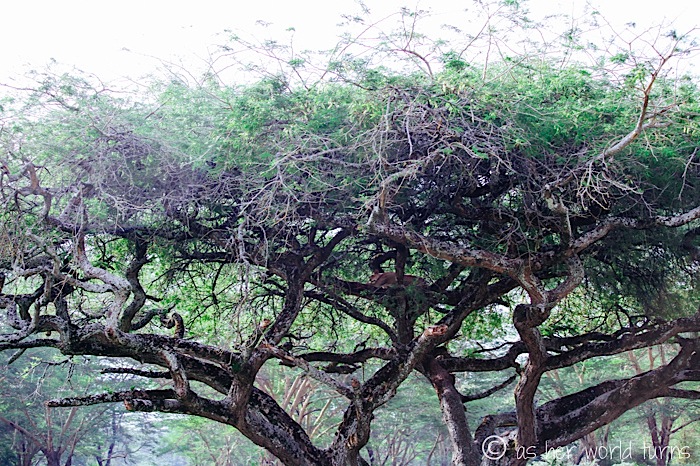
She’s just taking a nap.
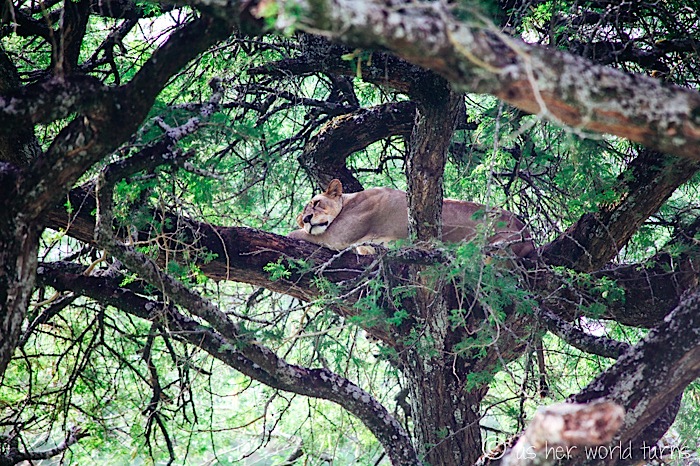
Then we spot another lion on the hillside:
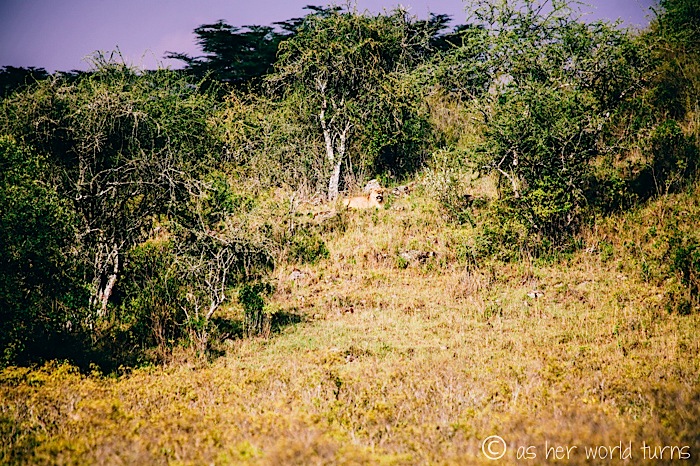
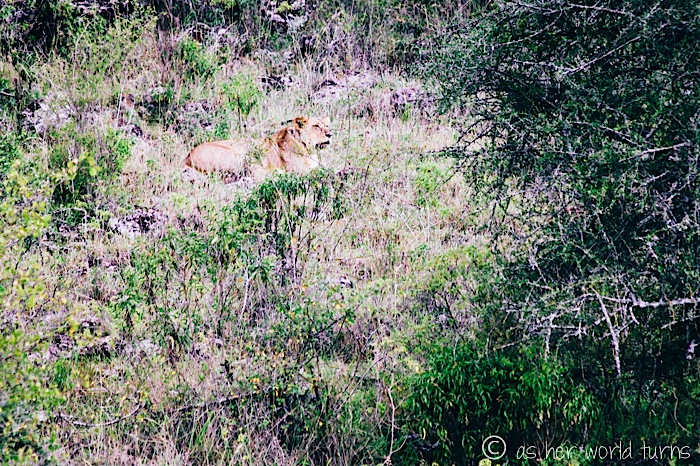
Our vehicle was alone when we spotted the previous two lions, but now we meet up with a crowd of safari vehicles staking out an area where someone has seen a lion in the tall grass. We pause for a few minutes but after no movement we press on, content with the lion sightings we’ve already experienced.
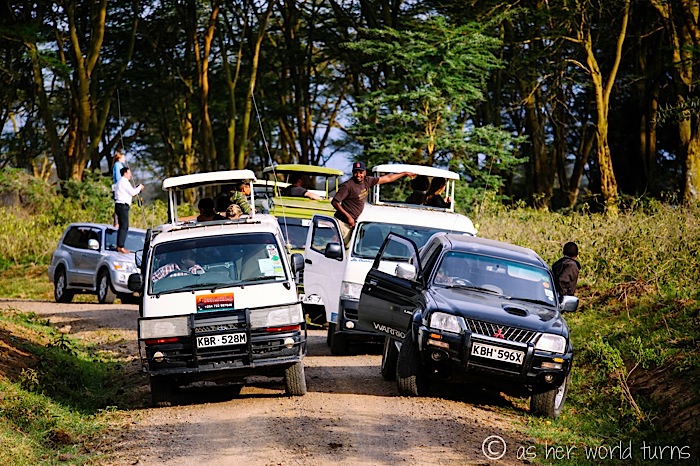
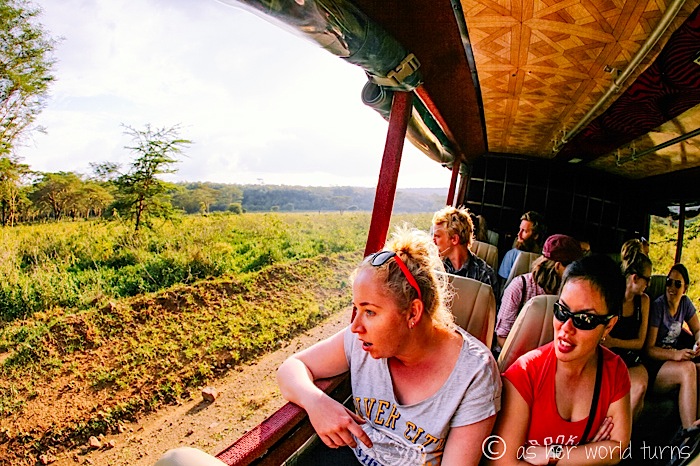
Late in the afternoon we reach the far shores of Lake Nakuru and glimpse those iconic pink flamingos all the way out on the water.
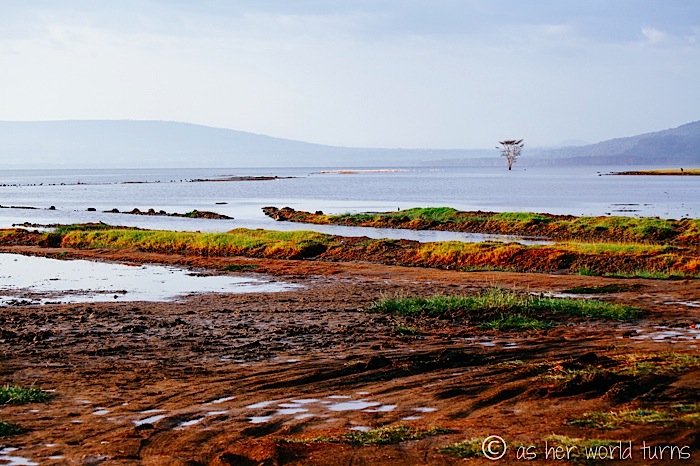
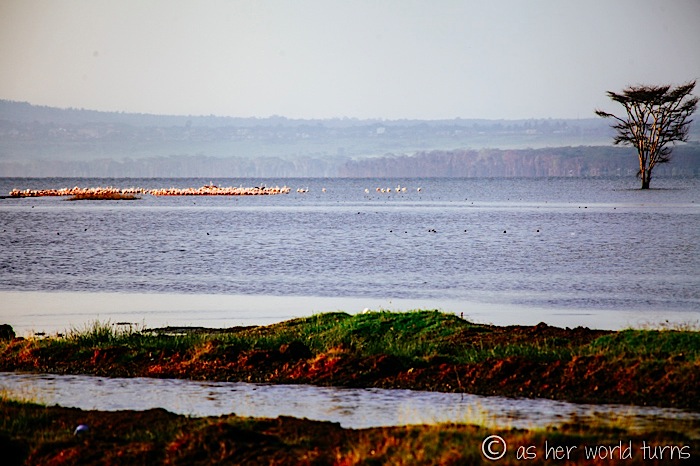
This area is safe for us to get out of the vehicle to stretch our legs.
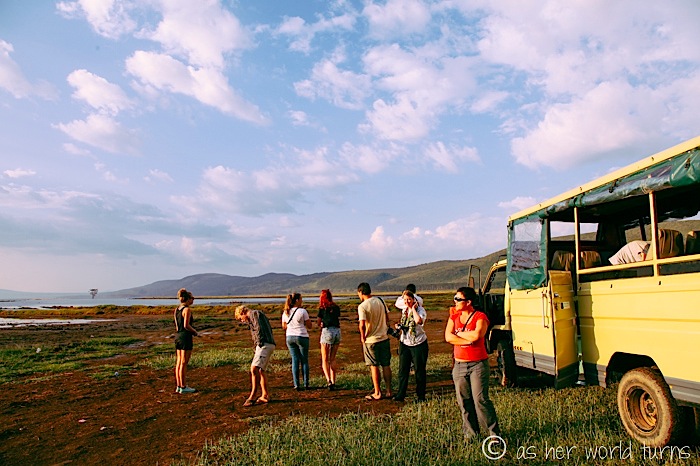
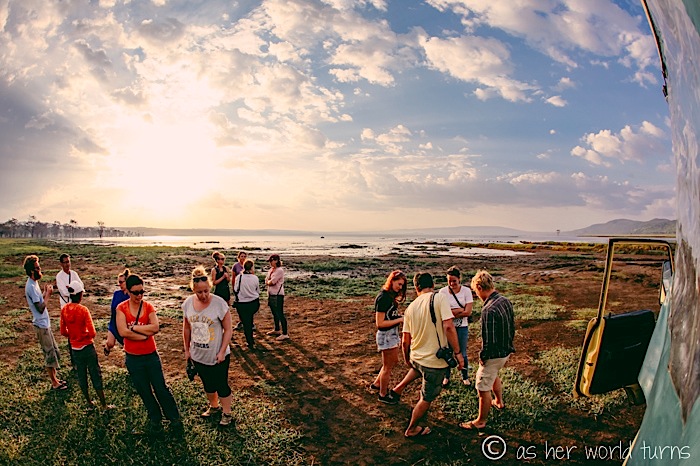
One last look at the flamingos:
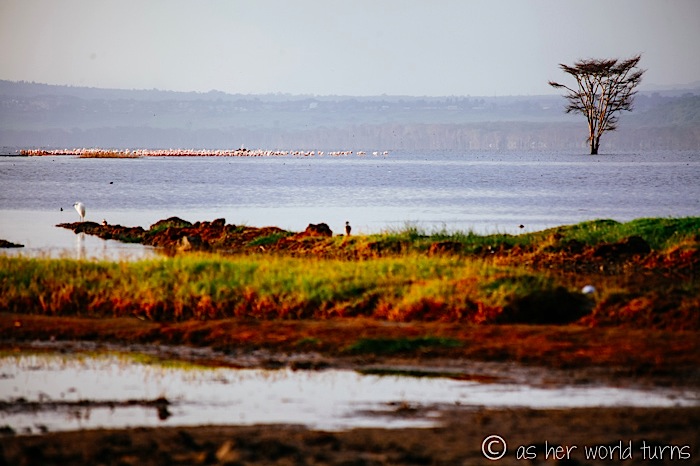
And here’s yet another rhino. Today we’ve seen both black and white rhinos, although even with the help of Google I can’t tell them apart. White rhinos are the more common variety as black rhinos are shyer and have a smaller population. Supposedly the mouth of the black rhino is more angled / pointed, but my eyes have trouble distinguishing that feature.

That’s two grey crowned cranes below — singular-looking birds.
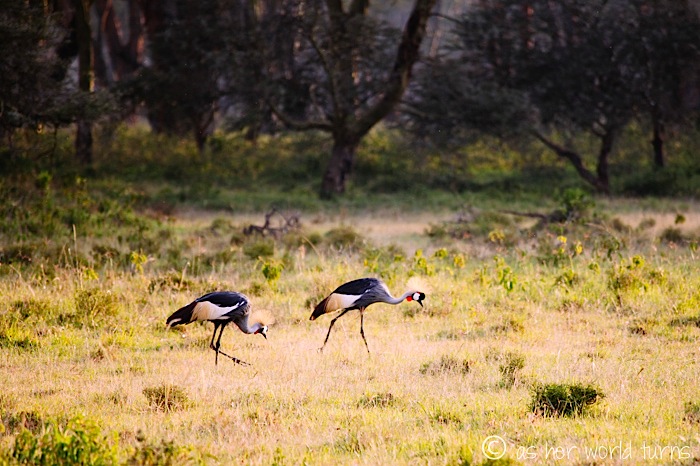
On our way out of the park, we pass by more buffalo and then zebras. I love the light in the next few shots.
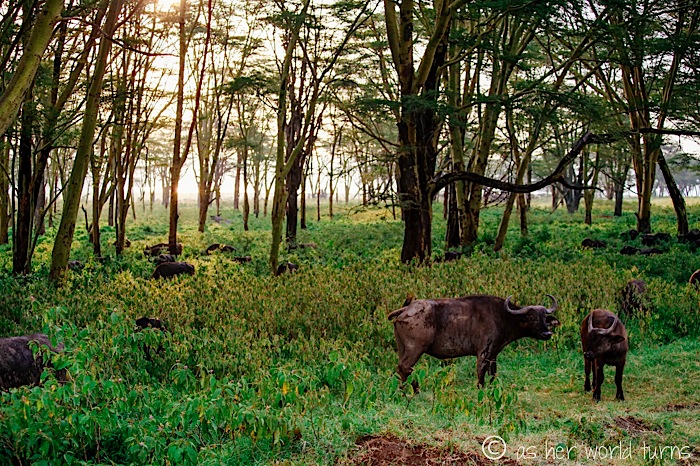
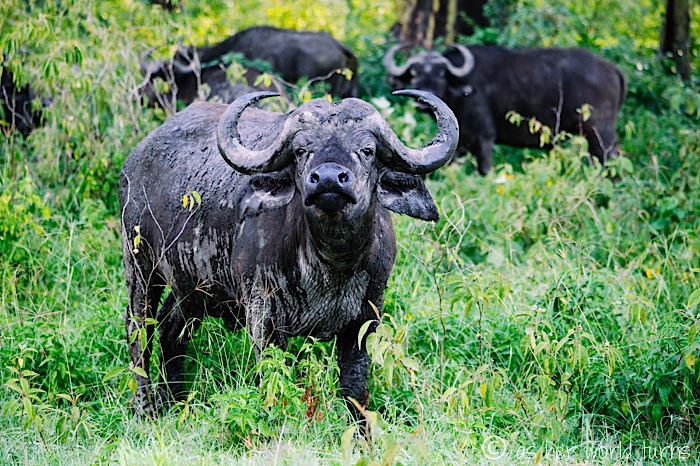
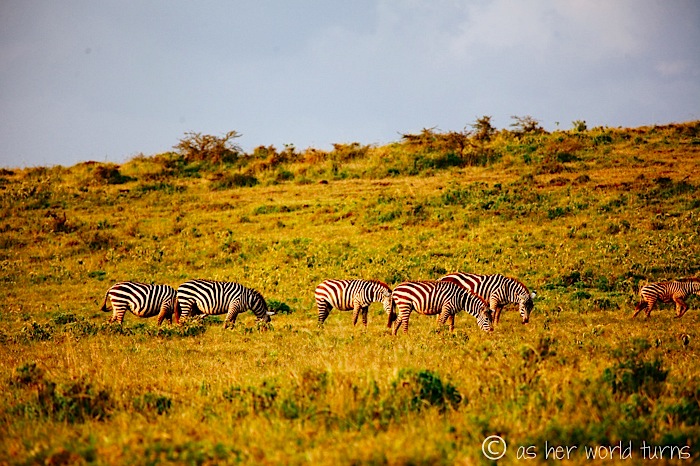

An eland grazes:
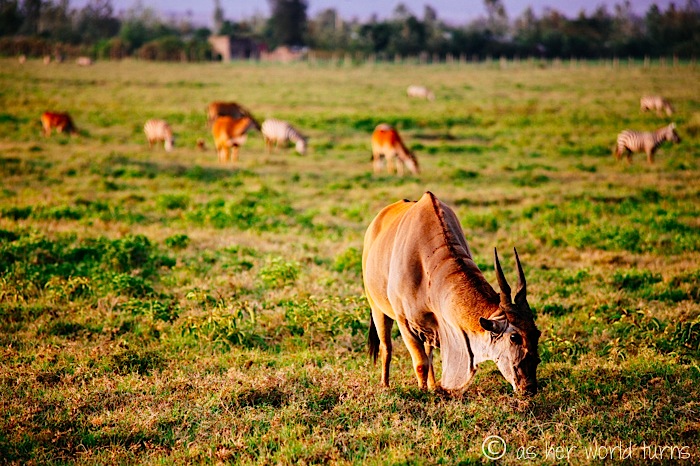
Buffalo skulls and horns line the park’s exit:
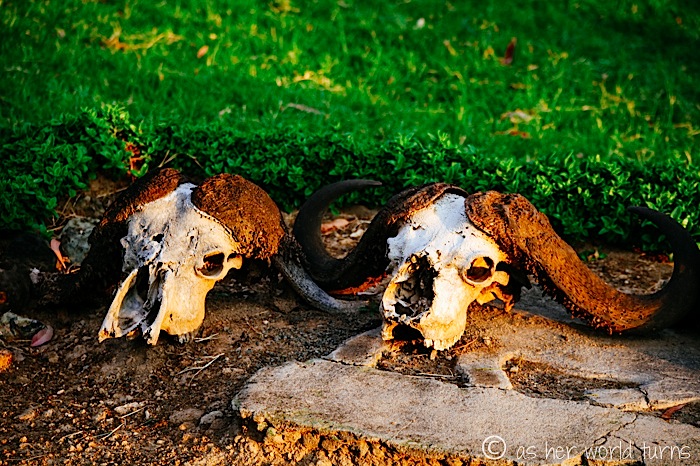
Whew — that was an impressive first game drive. I can hardly imagine how the Serengeti — the king of all game parks in Africa — will top this (spoiler alert: it doesn’t). It’s exhilarating to be in close proximity with these creatures and I am on a high the whole afternoon.
Thanks to Acacia Africa for discounting the 18-day Mountain Gorillas to the Mara tour in exchange for blogging and photography. Opinions are my own.

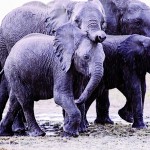
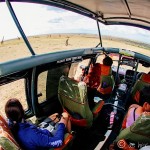
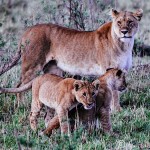
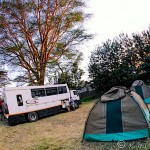
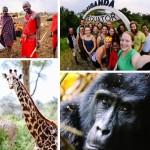

Witnessing the rhino battle must have been such an amazing experience! I was so disappointed I didn’t see lions or leopards on my South African safari, but I guess that just means I have to return to Africa for another safari someday.
Yes, the rhino battle was incredible to witness! Leopards are so elusive — my sighting were rare, as we saw one far away in a tree in the Serengeti and two babies in Zambia. I was disappointed not to see an adult leopard up close in the wild (I saw them in captivity but it’s not the same!). Oh well. More African safaris for us both, someday!
Nice photos. Thanks
Thanks Mr. Wing!